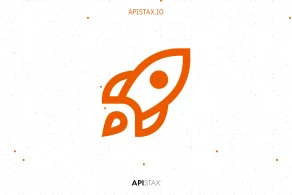Introduction to Using APIstax APIs
APIstax offers a range of secure and reliable APIs designed to meet your business needs, from creating PDF files to checking VAT IDs. In this blog post, we will walk you through the initial steps of working with these APIs.
Introduction
APIstax is a platform dedicated to providing APIs for common business requirements. With just one API key, you can access a variety of functionalities designed to streamline your business processes. Whether you need to create PDF files, check VAT IDs, or perform other tasks, APIstax provides a simple and reliable solution.
Prerequisites
Before you start using APIstax APIs, make sure you have:
- An API key from APIstax, which you receive upon registration.
- Basic knowledge of a programming language such as Python, JavaScript, or another language of your choice.
- An understanding of RESTful APIs and JSON, as APIstax utilizes REST endpoints and JSON for communication.
Getting Started
Registration and API Key
Registration: Visit the APIstax app and sign up for an account. The registration process is quick and straightforward. Upon registration, every customer receives 100 credits for free, allowing you to start experimenting with the APIs right away.
Obtaining an API Key: After registering, you will receive an API key that grants you access to the APIs. Keep this key secure, as it serves as your identity when making API requests.
API Documentation
APIstax provides comprehensive API documentation. This documentation is your primary resource to understand how to use the various APIs. It includes details about available endpoints, required parameters, and sample responses.
Simple Example
Let's go through a simple example of making a request to an APIstax endpoint. Suppose we want to create a PDF file from HTML.
Example in Python
import requests
api_key = "Your_API_Key"
url = "https://api.apistax.io/v1/html-to-pdf"
headers = {
"Authorization": f"Bearer {api_key}",
"Content-Type": "application/json"
}
payload = {
"content": "<html><body><h1>This is an example HTML for the PDF file.</h1></body></html>"
}
response = requests.post(url, headers=headers, json=payload)
if response.status_code == 200:
with open("example.pdf", "wb") as file:
file.write(response.content)
print("PDF successfully created!")
else:
print("Error creating PDF:", response.text)In this example, we send a POST request to the HTML to PDF endpoint. We submit a JSON payload containing the content for
the PDF file and save the response in a file named example.pdf.
Integration into Projects
Once you understand how to make simple API requests, you can integrate these APIs into your existing projects. Here are some ideas:
-
Web Applications: Integrate the API into your web application to dynamically create PDFs or EPC QR codes, or check VAT IDs in real-time.
-
Automated Scripts: Use the APIs in scripts to automate repetitive tasks, such as generating reports as PDFs.
-
Mobile Applications: Incorporate the APIs in your mobile applications to offer additional functionalities like document creation or data validation.
Error Handling and Best Practices
When working with APIs, it's important to handle errors appropriately and follow best practices to ensure the reliability and security of your applications.
Error Handling
Check Status Codes: Always check the HTTP status code of the response to confirm whether the request was successful. A status code of 200 indicates success, while other codes may point to errors.
Analyze Error Messages: APIstax returns detailed error messages that can help you identify and resolve issues. Read these messages carefully.
Best Practices
Secure API Key Storage: Keep your API key secure and do not share it publicly. Use environment variables or secure storage methods to protect your key.
Ensure Sufficient Credits: Monitor your credits to ensure you have enough to perform the necessary operations. Running out of credits can interrupt your service, so it's important to keep track of your usage and refill when necessary.
Use Caching: If applicable, cache the responses of API requests to reduce the number of calls and improve the performance of your application.
Summary and Next Steps
In this blog post, we've covered the basics of using APIstax APIs, including registration, obtaining an API key, navigating the API documentation, and executing a simple API request. We've also discussed how to integrate these APIs into your projects and highlighted best practices for error handling.
As next steps, you can:
- Explore more APIs offered by APIstax and utilize their functionalities in your projects.
- Develop more complex applications that combine multiple APIs from APIstax.
- Regularly review the API documentation to stay informed about new features and updates.
We hope this guide has helped you get started with APIstax APIs. Good luck integrating these powerful tools into your projects!
